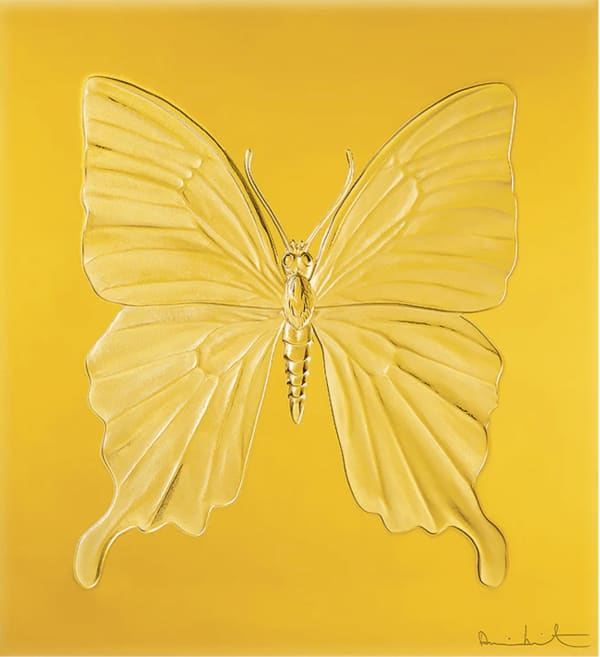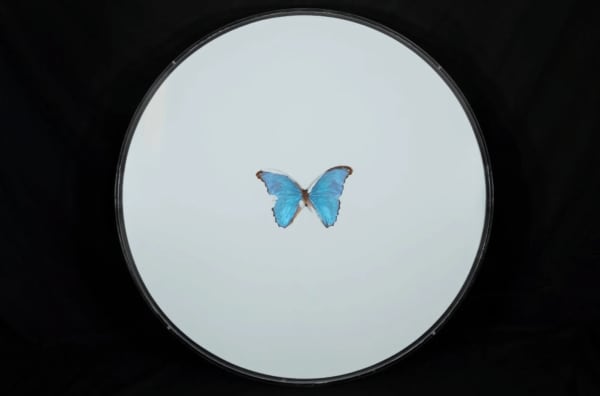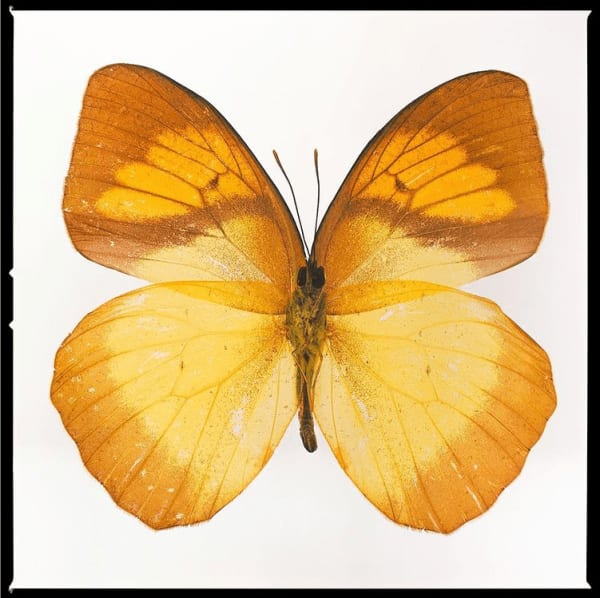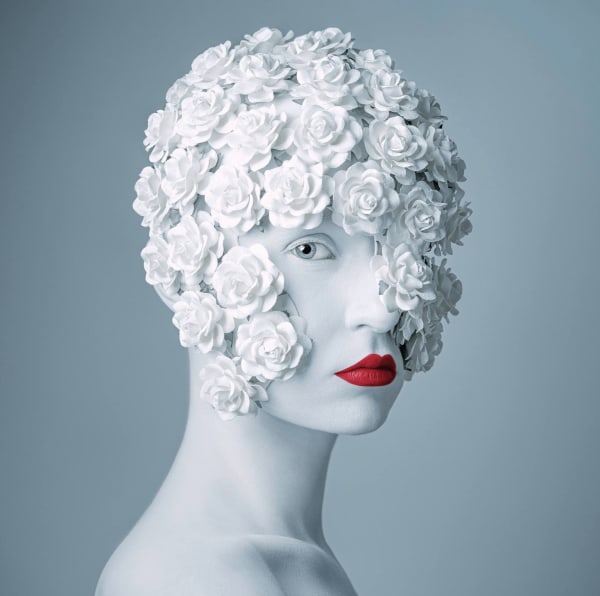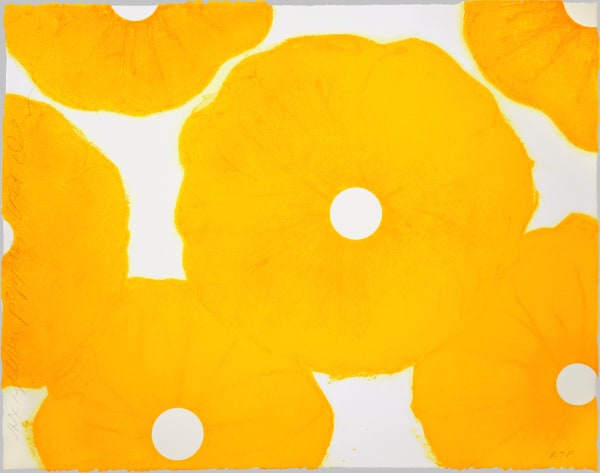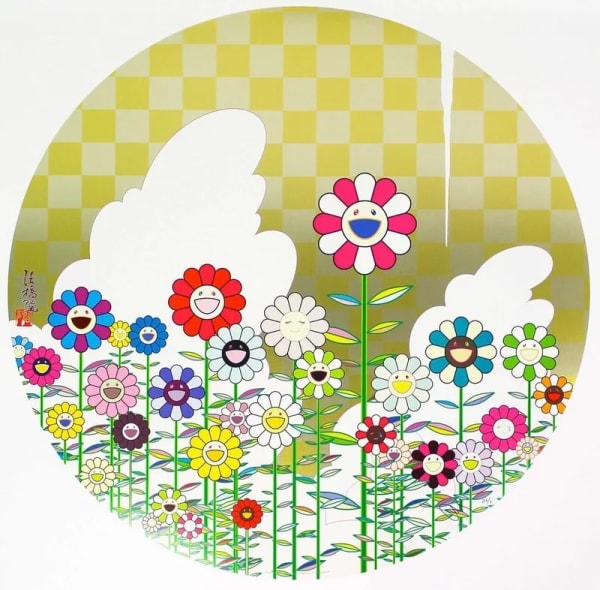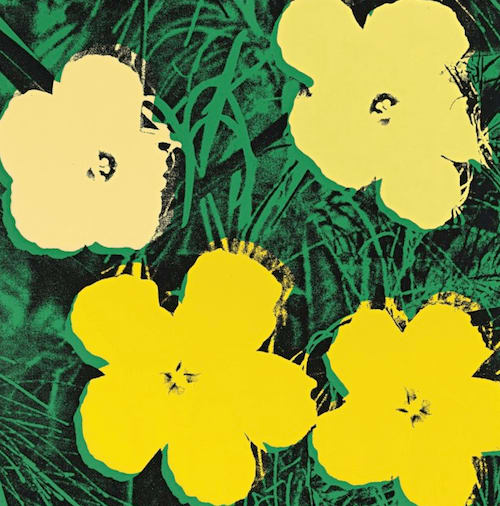Damien Hirst is particularly known for his use of butterflies as a symbol of life and death. The butterfly’s short life cycle serves as a reminder of mortality, while the vibrant colors evoke beauty and regeneration. For Hirst, the butterfly becomes a paradoxical image of death captured in perpetual life, forever frozen in the moment of its existence.
Andy Warhol, on the other hand, explored flowers as a subject in his famous Flowers series, where he used silkscreen techniques to create repeated, brightly colored images of hibiscus flowers. Warhol's flowers symbolize not only beauty and nature but also the fleeting nature of fame and commercialism. His repetition of the motif reflects the commodification of beauty in modern society, turning organic forms into manufactured icons.
Yayoi Kusama uses both butterflies and flowers in her art, often through a lens of surrealism and obsession. Her works, characterized by vibrant colors and repetitive patterns, use flowers to represent the infinite, while butterflies can symbolize transcendence and mental freedom. Kusama's art is deeply tied to her psychological experiences, making these natural motifs a bridge between the real world and her inner visions, celebrating both life's vibrancy and its fleeting nature.
Donald Sultan is known for his abstract depictions of flowers, often rendered in bold, monochromatic forms. His work balances the line between beauty and industrial decay, using flowers to explore themes of impermanence and resilience, contrasting the delicate with the enduring.
Takashi Murakami brings a playful, pop-art sensibility to his use of flowers. His iconic smiling flowers, while vibrant and cartoonish, subtly question the nature of happiness and consumer culture, merging traditional Japanese aesthetics with contemporary commercialism.
Together, these artists elevate butterflies and flowers as powerful symbols, each interpreting them through their unique artistic and philosophical lenses, reflecting on life, beauty, death, and the complexities of modern culture.


